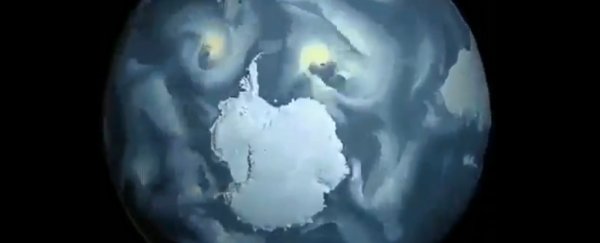Antarctica is known for its tempestuous weather, and the surface winds surrounding this icy southern continent are some of the strongest and most persistent on Earth.
Throughout most of the year, and especially in winter, these powerful gusts of coastal air drive what is described as the "mightiest current" in all the oceans: the Antarctic Circumpolar Current (ACC).
A year-long time-lapse from the National Center for Atmospheric Research paints this impressive phenomenon almost as if it were a moving Van Gogh painting. In the mesmerising animation below, you can see what sailors refer to as the "roaring forties", the fierce westerly winds that have driven a clockwise current around the frozen continent for some 34 million years.
For #EarthDay: A little visualization of surface winds around Antarctica.#Roaring40s pic.twitter.com/a108ea8lgJ
— NSF National Center for Atmospheric Research (@NCAR_Science) April 22, 2019
The ACC is the largest wind-driven current on Earth, and it can brew up frequent cyclones and create some of the roughest seas in the world. Such storms have claimed many a sailor's life, as they attempt to navigate the dangerous potential of 15-metre waves (50 feet), 70 knot winds, and collisions with giant icebergs.
Still, the ACC isn't just about destruction; it also makes room for life to flourish.
Through upwellings of iron and other nutrients, this massive flow of cold water provides the perfect isolated habitat for phytoplankton, krill, and other foundational creatures in the ocean's food webs.
Unimpeded by any continents, the ACC also stirs up heat and re-circulates it throughout the Atlantic, Pacific and Indian Oceans, while storing vast amounts of carbon dioxide (CO2) from the atmosphere.
Not just beautiful to look at, the ACC is an awe-inspiring influence on our planetary systems and the life that relies on them.
